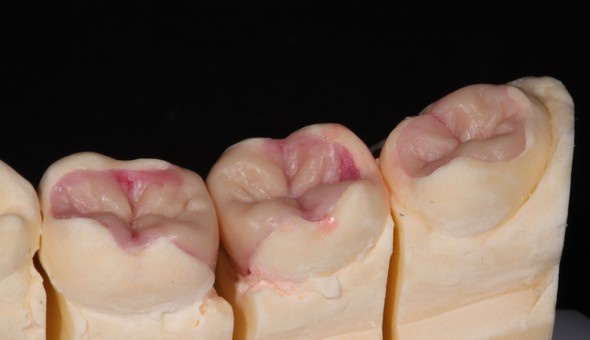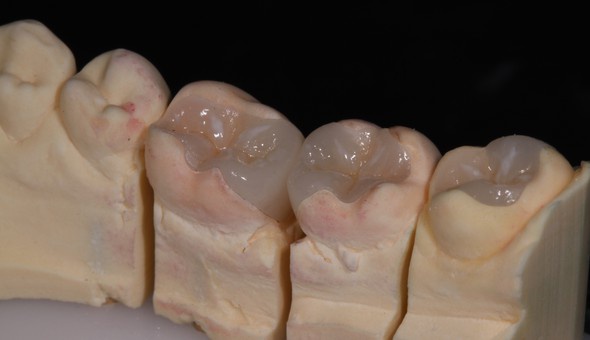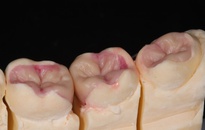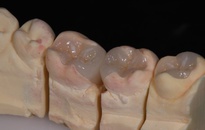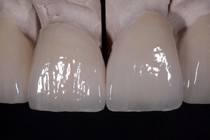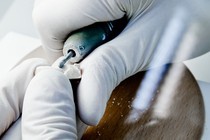Ordinary white fillings made of composite (not to mention amalgamates that contain harmful mercury) lose their tightness, colour and often structure (i. e. crumble or fall out) sometimes after just a year, being ready for replacement after 2-3 years, even if this is not visible from outside or not felt with a tongue. Every such replacement weakens a tooth, as it has to be ground further, to remove the secondary decay. The decay stems from the shrinking of the filling material already during the application and the exposition to light, while bacteria make their way to the deeper layers of a tooth.
Therefore, when we choose an inlay, even though it is several times more expensive, in a long term we save our time, nerves and money, as inlays are often ‘lifelong’. We are also protected against an unexpected pain of a tooth. Inlays are made of porcelain or gold. Gold has antibacterial properties and is very durable; however, for obvious reasons, it stands out from the tooth tissues. Porcelain inlays are aesthetic and replace the missing tooth tissue ideally, while sticking to tooth walls tightly. They are fixed like other fillings with very strong special glue, which does not change their colour and has very positive impact on the dental pulp (nerve), by blocking the access of bacteria and preventing secondary decay. We also eliminate problems due to inter-teeth gaps (e. g. the unpleasant smell from the mouth, painful reddened gums and the recurrent penetration of food between teeth), as the common surfaces of an inlay are profiled and polished at our laboratory, which is practically unattainable in ordinary fillings. Often at the border of a filling or the contact with an adjacent tooth, follicles or splinters occur as well as microgaps, which are an excellent habitat for bacteria and the storage place for decaying remnants of food. The replacement with inlays, especially of large fillings, is the best investment in health, appearance and functionality of one’s teeth, which provides the preservation of maximum tissues and extends their life.




